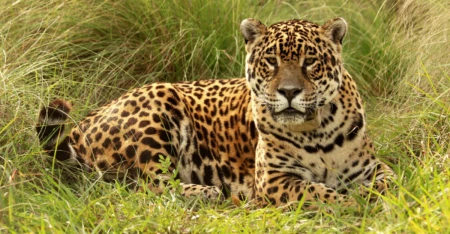Kris Tompkins Donates Land to Create Iberá National Park
I am writing to announce the donation of 375,000 acres to the Argentine government to create the new Iberá National Park in Argentina, and to ask you to join with me to celebrate Kris Tompkins and her team’s remarkable achievement. Their donation is contiguous to the 1,375,000-acre Iberá Provincial Park, which together now create the largest parklands in the country.
Sometimes called “the Argentine Pantanal,” Iberá is one of the planet’s great freshwater wetlands complexes, covering more than 3.2 million acres of grasslands and marsh in Corrientes Province of northeastern Argentina. The landscape supports fabulous wildlife including nearly 400 species of birds.
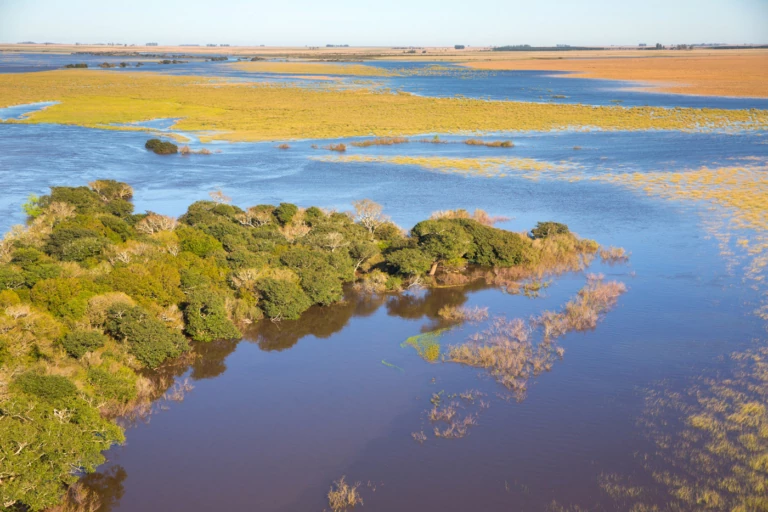
The wetlands of Corrientes, located in northeastern Argentina, will soon be home to the largest conservation area in Argentina. Photo: The Conservation Land Trust
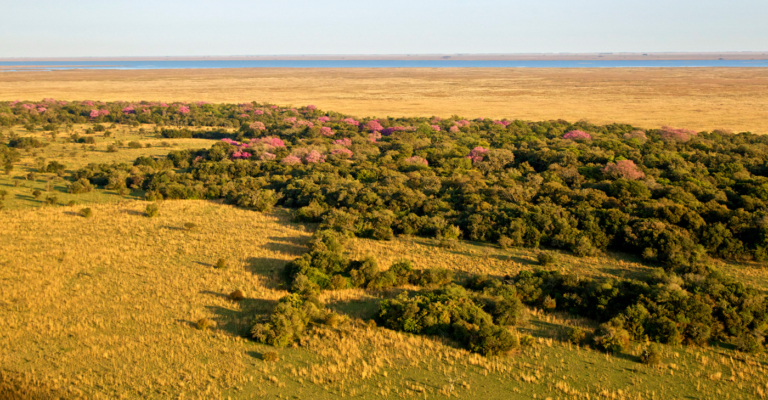
Iberá also encompasses dry grasslands, savannahs and forests. This combination of wet and dry ecosystems harbors a great diversity of flora and fauna as well as spectacular landscapes. Photo: The Conservation Land Trust
Kris McDivitt Tompkins, Patagonia’s first CEO, and her late husband, Doug, worked on creating this parkland from their first visit there in 1997. They bought contiguous land to the wetlands, ranches and supported local efforts to create a national park. The profound ancient knowledge about the wetlands estuary and their fauna began to be appreciated again. “Mariscadores”—the local name for hunters—went on to become the first park rangers of Iberá Wetlands. Their work has been key to the recovery of wildlife within the wetlands. At a time when mass extinctions are taking place all over the world, the Iberá reserve has become a refuge for species that are threatened including marsh deer, neotropical otters and many species of birds. Through their foundation, The Conservation Land Trust, the Tompkins and their team have reintroduced giant anteaters, white-collared peccaries, pampas deer, maned wolves and tapirs to the wetlands and are currently actively working on the reintroduction of jaguars, red-shouldered macaws, and other species. Their jaguar breeding center is the first of its kind in the world and is by far their most ambitious reintroduction program to date.
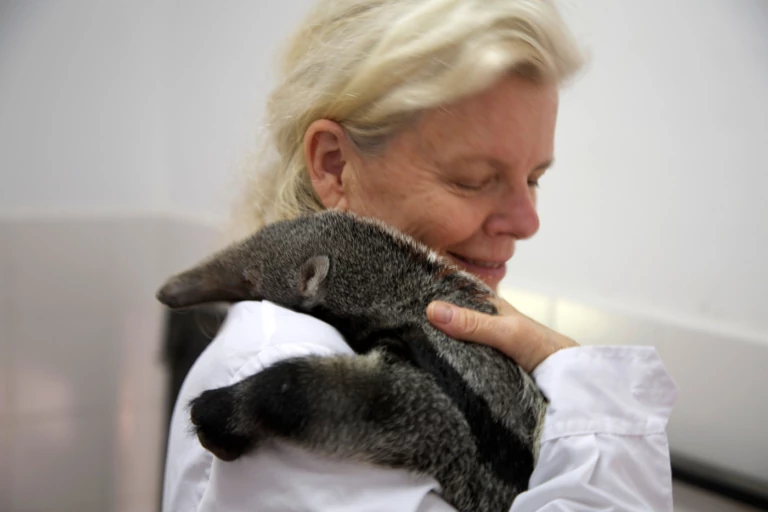
The Conservation Land Trust cares for giant anteaters that have been rescued or donated until they are big enough to successfully incorporate themselves into the Iberá wetlands and surrounding areas. Many of these animals are babies—like the one being held here by Kris McDivitt Tompkins—that are left orphaned when hunters kill their mothers within the chaqueño forests. Photo: The Conservation Land Trust
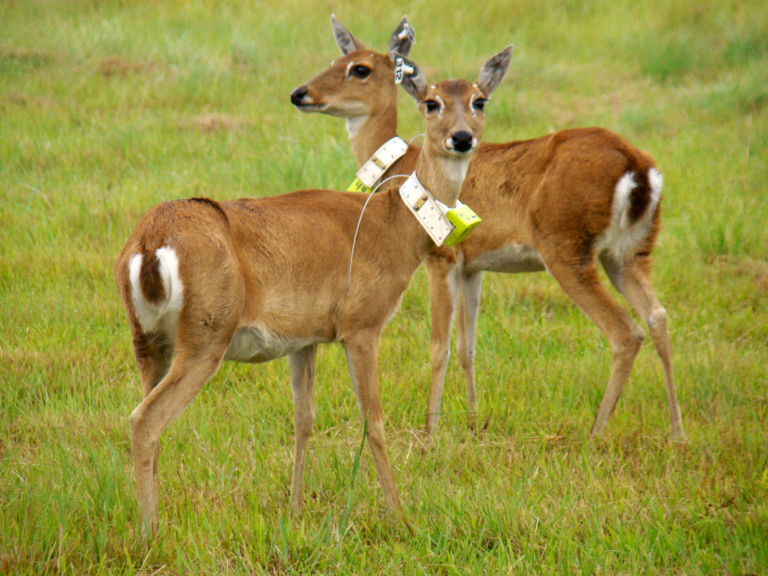
After decades of over-hunting and habitat loss, The Conservation Land Trust is working to increase the number of pampas deer in Iberá by reintroducing three new populations of the deer inside the park. Photo: Karina Sporring
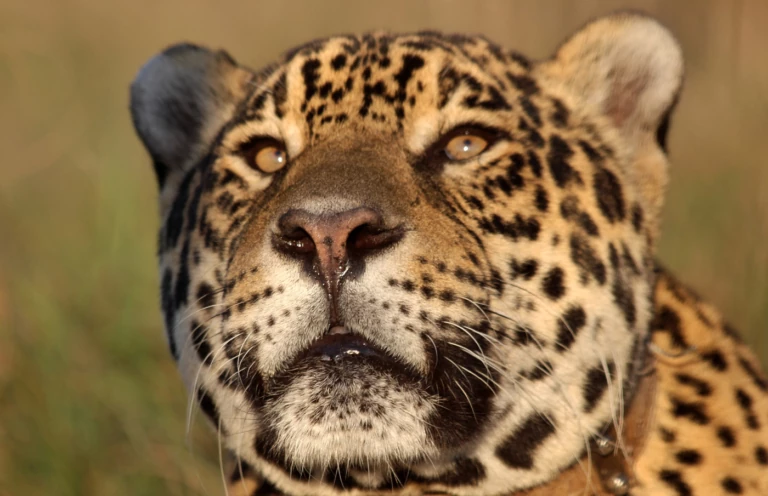
The jaguar breeding center at Iberá Park is working to reintroduce jaguars to an area where they have not been seen in over 75 years. Photo: Karina Sporring
Patagonia has supported the Tompkins’s work since 1991 through private donations from Yvon and Malinda Chouinard, catalog essays about the work of Conservacion Patagonica, and Mile for Mile, a New Localism film. We are currently creating all printed materials for the Patagonia Park in Aysen, Chile, a project Patagonia company has been a critical partner in since the beginning when Yvon, Malinda, Doug and Kris first went to visit the area to see with their own eyes that what became Patagonia Park was a project worth doing—and it was.
After Doug’s death last December, Kris kept right on going. Just last week, Kris met with Argentine President Mauricio Macri. He officially accepted Iberá parklands under federal jurisdiction. Once the donation is complete, the joint Iberá National Park and Iberá Provincial Park will be the largest park in Argentina. In conjunction, Tompkins Conservation has been named the recipient of BBVA Foundation’s 2016 Biodiversity Conservation Award, the highest conservation award that exists worldwide in the field of biodiversity conservation. I join with Yvon and Malinda to celebrate Kris’s achievement, and this remarkable park.
Want to see it for yourself? Learn more about visiting Iberá.

Kris McDivitt Tompkins and Argentine President Mauricio Macri celebrate the donation. Photo: The Conservation Land Trust
